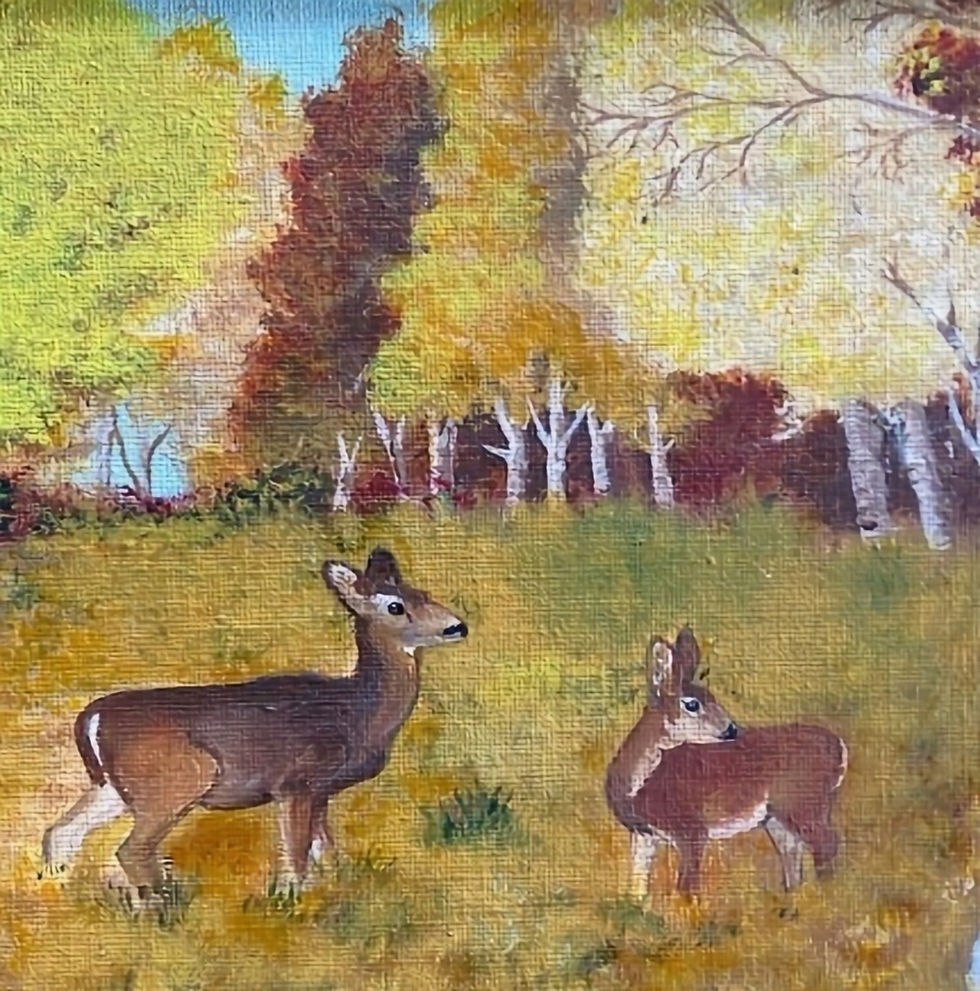Where Have All the Wildflowers Gone?
- darcygrahek

- May 9, 2021
- 3 min read
Although I have traveled over 2/3 of North America, I have lived my whole life in Oregon. Mostly southern Oregon in either the Rogue Valley or the south coast. I was a wildflower fan from my early years as my parents loved to take us kids into natural spaces. Being observant, I quickly caught on to the cycles. Spring is the bloom season. Warmth allows plants to grow into bloom and around 60 degrees is optimal air temperature for insect pollinators to fly. Many native bees, including bumblebees will pollinate earlier flowers, as they can fly at even cooler temperatures.
The last 20 years or so I was working a lot and raising my kids and I will admit I was not going looking for wildflowers. If I had, I might have noticed sooner, the wildflowers seem to have mostly disappeared. It so happened I became involved in native bee and butterfly conservation and that led me back to looking for wildflowers. Wild herbaceous flowers used to grow in all the usual edges: edge of the road, edge of the fields, edge of the waterways; also filling in the meadows and the open bluffs at the coast.
These exact same edges and open spaces are intensively managed by humans for our own benefits. Managed for view, maintenance, agriculture, real estate development, or golf, just for starters. A huge part of the management of edges involves mowing or spraying. The timing is devastating as is generally right before or during bloom. Before the grass gets too long. In managing grass, we have eliminated many flowers. The person mowing probably never noticed them. Cities and counties often do an incredible amount of spraying and mowing. When the timing of that could be delayed or an alternative found, increased flower numbers and diversity is possible. People who use Round-Up ™ are encouraged to spray during bloom for a better kill rate. Annual flowers only grow from seed that falls from their pollinated bloom. That interruption of bloom means no seed for next year.
Or often when these edges are infiltrated by humans, an invasive species is introduced and then maintenance is not performed or they are abandoned. Invasive plants on a new continent can grow so much faster, taller and produce longer bloom than the native plants, that they quickly dominate the landscape. The invasive plant creates a monocrop with no room for native flowers. On our south coast 65,000 acres are covered in a 7 foot tall, thorny, highly flammable invasive plant known as gorse. It has filled in most of the untended open spaces and likes to follow sand dunes and logging operations. Except where serious conservation is taking place, most of what I see blooming on the edges are European and Eurasian plant invaders. They might be pretty and that makes the problem worse because people will tolerate “pretty”.
It’s not just Western Monarchs in ever decreasing numbers, it’s also the native Milkweed without which the larva cannot survive. Oregon has 5 native milkweeds, different from the Midwest or Mexican varieties. I am now growing several hundred Milkweed plugs for a planting group that wants to boost conservation through creating corridors. Our first corridor will be from Bandon to Brookings, on private homesites, farms and ranches. I hope the folks planting Milkweed will consider adding in other wildflowers, much needed by all butterflies and bees. We could all plant an under-used edge somewhere, for the wildflowers and their pollinators.





Ücretsiz Rastgele Görüntülü Sohbet Kameralı Sohbet Gabile Sohbet Canlı Sohbet Cinsel Sohbet Uygulaması.https://www.gevezeyeri.com/cinselsohbet.html
Ücretsiz Rastgele Chat Görüntülü Chat Kameralı Chat Gabile Chat Canlı Chat Cinsel Chat Uygulaması.https://www.gevezeyeri.com/gabilesohbet.html
https://indianwomenorg.com/read-blog/19053
https://sparktv.net/read-blog/53482
https://together-19.com/read-blog/70834
https://ourfamilylync.com/read-blog/25102
https://deutschekleidung.com/read-blog/16604
https://suomennbaseura.com/read-blog/10361
https://firstamendment.tv/read-blog/61542
https://divisionmidway.org/jobs/author/sohbetuygulamasi/
http://www.mizmiz.de/read-blog/54768
https://mylinks.ai/sohbetoadalari
https://www.pinterest.co.kr/chatodalari0357/
https://www.pinterest.co.uk/mobilsohbetodalari/
https://mx.pinterest.com/sevyelisohbet/
https://www.pinterest.de/sohbetsohbet0719/
https://www.pinterest.fr/chatsohbet0342/
https://www.pinterest.cl/ucretsizsohbet/
https://at.pinterest.com/istanbulsohbet/
https://taplink.cc/sohbetodalari
https://os.mbed.com/users/mobilsohbet/
https://eternagame.org/players/408511
https://www.ted.com/profiles/45248260
https://linkpop.com/canlisohbet
https://onne.link/sohbetodalari
https://teletype.in/@sohbetedin/sohbet
https://joy.link/sohbetedin
https://linkpop.com/canlisohbet
https://www.iglinks.io/sohbet-qgd?preview=true
https://flow.page/sohbetodalari
https://tr.linkedin.com/today/author/gevezeyeri?trk=article-ssr-frontend-pulse_more-articles
http://opensource.platon.sk/forum/projects/viewtopic.php?t=10945435
http://opensource.platon.sk/forum/projects/viewtopic.php?t=10945437
k
Clippers star Kawhi Leonard will overlook Activity 5 versus the Jazz upon Wednesday evening with a straight knee sprain, the staff members introduced Wednesday. Los Angeles claimed there was no plan for Leonard return. Leonard standing for the unwind of the sequence is inside question,in accordance in direction of ESPN Brian Windhorst and Ramona Shelburne. In accordance in the direction of The Athletic Shams Charania, the personnel worries that Leonard includes endured an ACL damage. It is unclear once particularly Leonard experienced the damage within just Recreation 4, still he sat the supreme 4:35 of Los Angeles Video game 4 earn previously mentioned Utah before long immediately after colliding with Jazz ahead Joe Ingles Dario Saric Pet Jersey. Leonard was…
Countless eyes and ears incorporate been targeted upon the NBA's preference in direction of suspend Phoenix Suns bulk operator Robert Sarver for a person time 12 months and wonderful him $10 million for his damaging perform that provided racial and misogynistic claims towards his staff. We've listened to in opposition to LeBron James, who feels that the NBA, "obtained this a single improper". We incorporate listened to against earlier NBA Avid gamers Affiliation president Chris Paul upon the point as he pointed out that by means of Twitter that, "the sanctions fell limited and certainly addressing what we can all concur was atrocious habits".Such as innumerable many others, I discussed the article. I was and am horrified and frustrated by…
yes